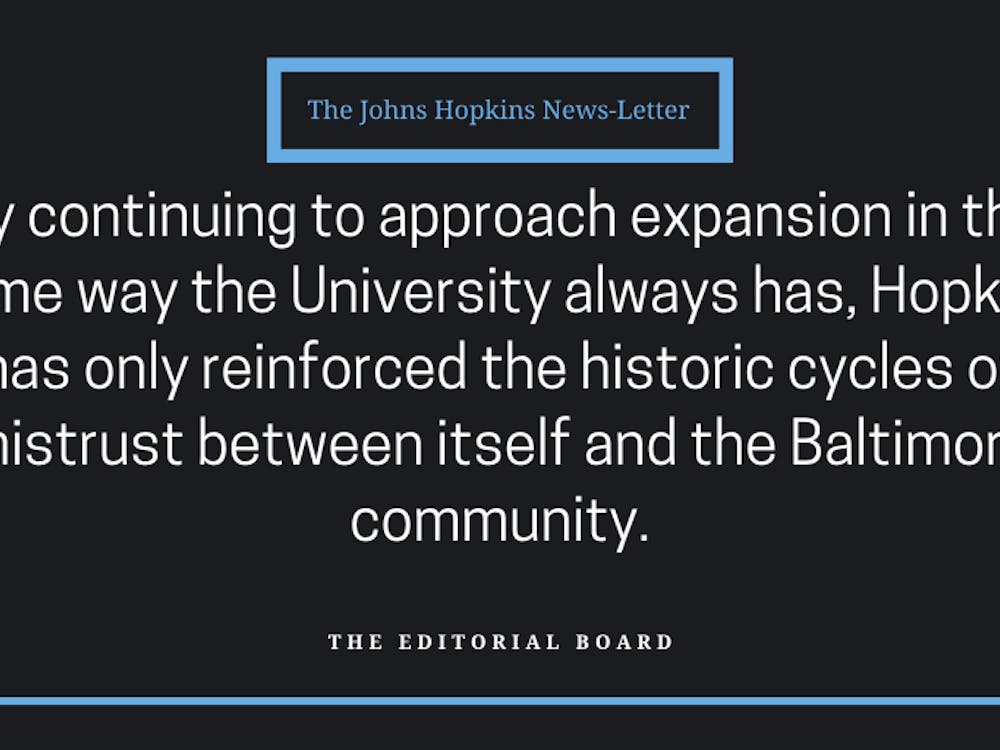When our parents went to college, orientation rarely lasted more than a day. It was just a time to register for classes and buy books. Parents attended simply to provide their wallets. There were no social mixers. There was no set interaction between students. There were no community building events. There were no formal talks explaining how to transition into college life. Unless you were going to parties, you sat alone in your room for days.
Today, there are two main types of orientations. The one we went through, a week full of events before class starts, is more popular among smaller schools like Hopkins. At larger schools like North Carolina State or the University of Alabama, freshman sign up for a short two to four day orientation over the summer. Whichever style of orientation the school runs, the programs include all the social gathering needed for most students to be able to form a rudimentary friend group.
Obviously, orientation is in a better place now than it was 30-60 years ago. As a freshman, I just completed the orientation process two weeks ago. I had a great time during O-Week, and I have nothing against the First Year Mentors or orientation organizers. Everyone did a fantastic job putting the event together.
The experiences I had were exciting, and I met so many people I couldn’t even remember all their names. Though I was in a completely new place, I never felt alone. We bounced from barbecue to Baltimore day to Blue Jay-themed everything. There was always something to do.
And then there was another thing, and another. There were so many meals, talks and mixers that were planned for us that by the end of O-Week, my First-Year Mentor (FYM) group was basically begging my FYM to let us skip this talk or that dinner.
Of course, nobody would get tired of doing the fun stuff. But it was the sheer amount of activities, lasting from when you woke up to when you went to sleep, that didn’t allow for the organic formation of friend groups. Orientation has changed from the one extreme our parents experienced to another.
Then, after convocation on the first day of class: radio silence. Orientation ends the day before students need their orientation resources the most. I got lucky because my FYM made it very clear that they are willing to help us through the entire year, and we’ve maintained semi-regular contact. But there is no requirement or even incentive for mentors to continue to act as mentors throughout freshman year. Freshmen lose a potentially important resource.
And it’s even worse at other schools. Hopkins is progressive for even having mentors at all. I’ve talked to freshmen at UC Berkeley, UPenn, UNC Chapel Hill, American, Alabama and more. All of them agreed that their orientation ended the minute after convocation.
So how is it that a program designed to transition students into normal college life doesn’t participate in that transition? There is nothing wrong with an extended O-Week, Pre-Orientation programs or SOHOP. They are just icing on the already iced cake. There is nothing inherently wrong with the current state of orientation in colleges across the nation.
However, in trying to improve it, these colleges are doing so with the wrong mindset. The week preceding class is not a time in which freshmen will get the most value out of an orientation program. Once class and normal college life begins is when freshmen encounter their largest problems, community- or academic-based.
This is where orientation to the Hopkins campus and community needs to continue to happen. These first couple of weeks is where orientation belongs, where it can service students the best.
Samuel Farrar is a freshman planning to major in political science. He is from Brevard, N.C.















Please note All comments are eligible for publication in The News-Letter.